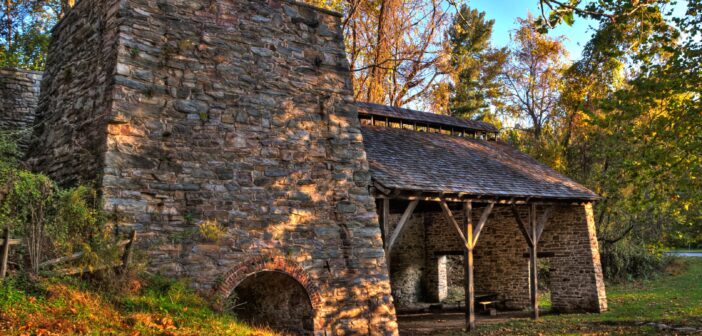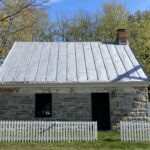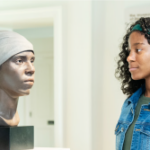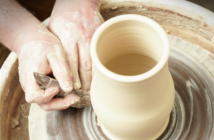Using Science to Learn About the Catoctin Furnace’s Past
By Darrin Youker
Nearly 50 years ago, residents in the Catoctin area rallied to protect their community’s legacy.
Faced with the potential of losing the iron furnace that defined this northern Maryland community, four families formed the Catoctin Furnace Historical Society. Ultimately, they were successful in their efforts to prevent the iron furnace and other historical structures from being taken for a highway project.
Having spent years preserving and protecting those structures and opening them to the public, members of the historical society are now focused on uncovering the history of this critical early industry in rural Maryland.
In particular, society members are learning more about the enslaved African Americans who were the first workers at the iron furnace, which dates back to the American revolution.
“The continuing mission is to reinterpret and center the narrative on the history of Catoctin, find the descendants of the African-American community, and preserve and protect the resources that are still here,” says Elizabeth Comer, president of the Catoctin Furnace Historical Society.
- “Under the Floorboards” archaeology exhibit can be found in the Museum of the Ironworker.
- The Forgeman’s House is an accurately restored 1820 worker house in the village of Catoctin Furnace.
- The unique extant double log house was home to the families of furnace workers for over two centuries. It is now home to a museum and interpretive center.
- Unique forensic facial reconstructions of two of Catoctin Furnace’s enslaved ironworkers created in 2020 in conjunction with StudioEIS and the Smithsonian Institution.
While the historical society successfully fought the removal of the iron furnace for the roadway expansion, an African-American cemetery tied to the site was not as fortunate. However, the excavation of the cemetery in the early 1970s is providing modern-day researchers with a unique opportunity to learn more about those early enslaved workers.
Working with the Smithsonian Institute and Harvard University, the historical society is using DNA evidence recovered during the excavation in 1979 to possibly identify living relatives of the slaves who lived and worked at the furnace.
The genomes are still being processed, but Comer says she is hopeful that these results will be posted to national and international genealogy sites later this year. In many cases, the only information about the enslaved individuals working at the furnace is their first name, gleaned from documents listing them as property, as new owners took over the business.
“As far as knowing where they moved to and what happened to them, that is a huge question mark,” Comer says. “We are hoping that DNA research can answer that question.”
The ruins of the iron furnace—likely the third built as part of the Catoctin operation—still stands. From a parking lot near the furnace, a trail leads to a viewing area of the African-American cemetery. Along this walkway are interpretative signs that tell the story of the furnace and its workers.
Visitors can also tour the Museum of the Ironworker, open every weekend, and learn more about the individuals who worked the furnace and the community that grew up around it. In addition, visitors can view the Collier Log House, a structure that housed workers and is furnished in 19th-century style.
What makes Catoctin unique is its preserved buildings, coupled with the historic homes in the village that continue to be privately owned and preserved, says Comer.
“Catoctin is a living, breathing community of people who own historic homes and have worked to preserve them and steward them,” she explains.
Beverly Hoke, whose great-grandfather worked at the furnace, grew up in a historical home in Catoctin and still lives in the village today. She has vivid memories of life after the furnace closed, as well as the close-knit community that had grown up around it.
In particular, the general store in the village was the hub of community life, Hoke remembers.
“I don’t believe any of the women in the village, except maybe one, had a driver’s license,” she says. “If you needed anything, the store had it.”
Water for the village was pumped from springs that originated in the mountains; few homes had running water or indoor plumbing, Hoke says.
The fact that so many of the homes connected with the furnace are still standing helps tell the story of history in the area, Comer says
“When you go down the street and you look at it, it is by and large a 19th-century landscape,” she says. “You get a feel of that history without a lot of modern intrusion.”
Hoke remembers walking to school every day past the ruins of the Catoctin Furnace. Covered in weedy overgrowth, Hoke and her classmates barely gave any thought to the ruins, or what they meant to the area she lived in for her whole life.
But she is thankful for the work that she and others have done to make sure this piece of history is preserved. Her son worked on the stone mason crew that rebuilt the furnace, and her grandson often joins her on weekends to volunteer at the Museum of the
Ironworker.
“For me, it’s knowing that history is around here, and I grew up with it,” Hoke says. “I’m glad they saved it for the younger generation to see how people lived.”
To learn more about the Catoctin Furnace Historical Society, visit www.catoctinfurnace.org








